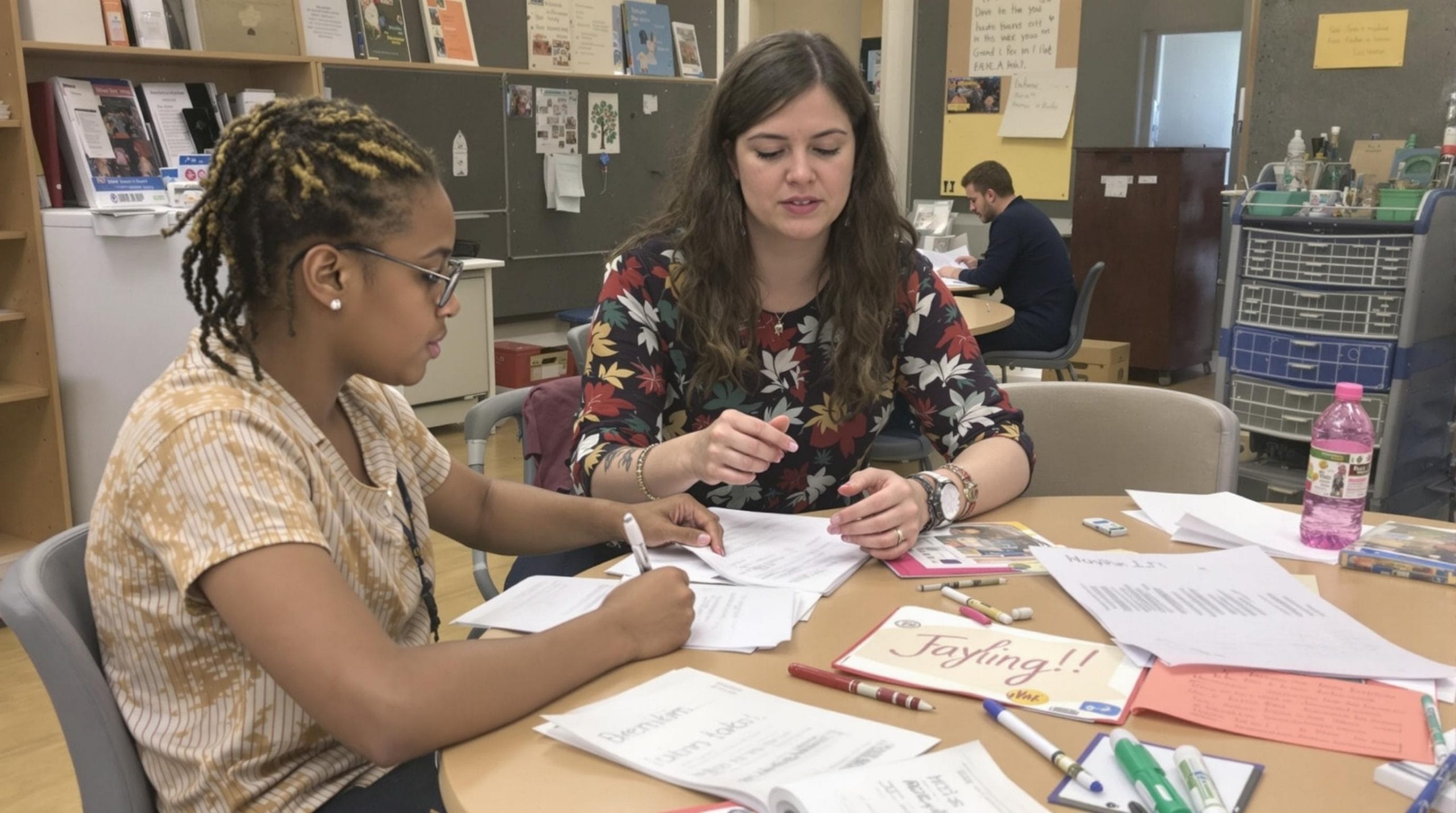50 Simple STEM Activities for Kids (Fun Examples Inside!)
STEM education opens doors to fascinating discoveries while building critical thinking skills that last a lifetime. Engaging children in hands-on STEM Activities at an early age not only nurtures their natural curiosity but significantly increases their likelihood of pursuing science and technology careers in the future.
Key Takeaways
- Children exposed to STEM between ages 5-8 are 53% more likely to enter STEM careers later in life.
- Hands-on Kids STEM activities improve retention rates by 75% compared to traditional lectures.
- Simple STEM projects can be created using everyday household items, making them accessible for all families.
- STEM jobs are growing at nearly triple the rate of non-STEM positions, offering better future career prospects.
- DIY STEM activities provide fun examples of real-world science and engineering concepts.
The Power of STEM Education: Why These Activities Matter
The impact of early STEM exposure is remarkable. Research shows that children who engage with science, technology, engineering, and math between ages 5-8 are 53% more likely to pursue STEM careers as adults. This early foundation builds confidence and interest that can shape their entire academic journey.
The economic advantages are equally compelling. STEM jobs are projected to grow 10.4% by 2033, compared to just 3.6% for non-STEM roles. With 3.5 million STEM positions needing to be filled by 2025, these careers represent significant opportunity. College-educated STEM workers already earn 26% more than their non-STEM counterparts.
Parents recognize these benefits, with 76% hoping their children will pursue STEM careers. This growing interest has fueled the children education market, with global STEM toys projected to reach $1.83 billion by 2030.
Engineering Marvels: Building and Design Activities
Engineering activities develop spatial reasoning and problem-solving skills that benefit children across all subjects. These hands-on projects bring abstract concepts to life while teaching persistence and creative thinking.
Try these engaging engineering activities with materials you likely already have at home:
- Balloon-Powered Car Races: Use recyclable materials like cardboard bodies, plastic bottle cap wheels, and straw axles. Experiment with different balloon sizes and nozzle shapes to see how they affect speed and distance.
- Popsicle Stick Bridges: Challenge kids to build a bridge that can span a certain distance (e.g., between two books) and then test its structural integrity by adding weights like small toys or coins.
- DIY Hydraulic Systems: Create simple lifts or moving parts using two or more syringes connected by flexible plastic tubing filled with water. Pushing one syringe makes the other move!
- Paper Airplane Design Competitions: Test variables like wing shape (long and narrow vs. short and wide), folds, and added weight (like paperclips) to see which designs fly farthest or perform aerobatics.
- Marshmallow and Toothpick Structures: Teach geometric principles by building towers, domes, or bridges. See who can build the tallest freestanding structure or the strongest one.
- Newspaper Forts: Roll sheets of newspaper tightly into “logs” and secure them with tape. Kids can design and build surprisingly sturdy forts, learning about structural shapes like triangles.
- Cardboard Tube Marble Run: Collect paper towel and toilet paper tubes, along with other cardboard recyclables. Cut them, tape them together, and design a pathway for marbles, exploring angles, speed, and gravity.
- Build a Better Boat: Provide materials like aluminum foil, craft sticks, corks, and plasticine. Challenge kids to design a boat that can hold the most pennies before sinking.
The egg drop challenge remains a classic engineering problem that children love. Give kids household materials like straws, cotton balls, tape, paper cups, and bubble wrap, then challenge them to create a container that will protect an egg from a fall (start with a small height and gradually increase). This activity mimics real engineering challenges faced by NASA scientists when designing landing modules.
Technology and Coding Adventures
Technology skills are increasingly vital in today’s digital world. AI and personalized learning systems are transforming education, making tech literacy more important than ever. Fortunately, introducing coding and technology concepts can be both fun and accessible.
Start with these technology-focused activities:
- Scratch Programming Projects: Use the free Scratch (from MIT) visual block coding website or app to create interactive stories, simple animations, and basic games. There are tons of beginner tutorials.
- Unplugged Coding Activities: Use household items like colored cups or paper squares to teach sequences and algorithms. For example, create a path of colored squares and have your child write “code” (e.g., “move forward 2 red, turn right, move forward 1 blue”) for a toy to follow.
- Simple Robotics with Kits: Use affordable kits like LEGO WeDo or Bristlebots (vibrating robots made with a toothbrush head and a small motor) that combine building and basic programming or circuit completion.
- Circuit Building with Conductive Dough: Make your own conductive dough (many recipes online using flour, salt, cream of tartar, water, and oil) and insulating dough. Use them with battery packs and LEDs to learn basic circuit concepts like open and closed circuits.
- DIY Video Game Design: Use kid-friendly platforms like Bloxels or Stencyl (for older kids) that require minimal typing and focus on drag-and-drop interfaces or visual logic.
- Stop Motion Animation: Use a smartphone or tablet with a stop motion app (many are free or low-cost). Kids can use toys, clay, or drawings to create short animated movies, learning about frames, timing, and storytelling.
- Typing Games: Introduce basic keyboarding skills through fun, free online typing games designed for kids. This builds a foundational skill for all future tech interaction.
- Explore Google Earth: Go on virtual field trips! Have kids find their house, famous landmarks, or explore different biomes around the world, learning geography and how digital mapping tools work.
“Unplugged” coding activities are particularly valuable for younger children, as they teach computational thinking without screen time. Try creating a “human robot” game where one child gives step-by-step instructions (e.g., “take 3 steps forward,” “turn left,” “pick up the ball”) for another child to follow, demonstrating the precision needed in computer programming.
Science Experiments That Wow
Science experiments bring immediate wow-factor to STEM learning. The hands-on nature of these activities makes abstract concepts tangible and helps children develop hypothesis-testing skills.
These simple science experiments use common household items:
- Baking Soda and Vinegar Volcano Eruptions: A classic! Add food coloring for effect. Use different amounts of baking soda or vinegar and observe changes, introducing measurement to explore chemical reactions.
- Growing Crystals: Make solutions with salt, sugar, or Epsom salts in hot water. Pour into a jar with a string or pipe cleaner suspended in it and watch crystals form over days.
- DIY Lava Lamps: Use a clear bottle, water, vegetable oil, food coloring, and effervescent (fizzy) tablets to demonstrate density and chemical reactions.
- Magnetic Slime Creation: Make or buy slime and add iron filings. Use a strong magnet to make the slime “dance” and explore magnetism.
- Plant Growth Experiments: Test variables like light (cupboard vs. windowsill), water (different amounts), or soil type (sand vs. potting soil) with bean seeds in clear cups to observe root and shoot growth.
- Walking Water: Place several clear cups in a row, some with water and food coloring (primary colors work well), and some empty. Drape folded paper towels from one cup to the next and watch the colored water “walk” and mix.
- DIY Rainbow Density Tower: Carefully layer different liquids like honey, corn syrup, dish soap, water (colored), and vegetable oil in a tall clear glass to show how liquids have different densities.
- Static Electricity Fun: Rub a balloon on hair and see it stick to a wall or pick up small pieces of tissue paper. Discuss static charges.
Creating homemade weather stations offers ongoing scientific observation opportunities. Children can build rain gauges from clear plastic bottles (cut the top and invert it as a funnel, then add a scale), wind vanes from paper plates, straws, and pins, and even simple anemometers (wind speed) with paper cups and straws. These tools allow kids to collect real data while learning about meteorology and climate science.
Math Made Fun: Playful Number Activities
Math anxiety affects many children, but playful math activities can transform fear into fascination. When math concepts are embedded in games and projects, children develop number sense naturally and joyfully.
Try these engaging math activities:
- Geometric Shape Scavenger Hunts: Indoors or outdoors, have kids find and list objects that are circles, squares, triangles, rectangles, cubes, spheres, etc.
- Cooking and Baking Projects: These teach fractions (half a cup), measurements (teaspoons, tablespoons), temperature, and proportions. Doubling a recipe is a great challenge!
- Pattern-Making Games: Use colored blocks, beads, buttons, or even snack foods (like M&Ms or Skittles) to create and extend patterns, building early algebraic thinking.
- Probability Experiments: Use dice to explore the likelihood of rolling certain numbers, or flip coins to track heads vs. tails over many trials, introducing basic statistics.
- Building 3D Shapes: Use playdough and straws, or mini marshmallows and toothpicks, to construct cubes, pyramids, and other 3D geometric shapes. Count faces, edges, and vertices.
- “Guess How Many” Jar: Fill a clear jar with items like jellybeans, pasta shapes, or cotton balls. Have family members guess the quantity, then count together. The closest guess wins!
- Store Play: Set up a pretend store with household items and price tags. Kids can practice adding costs, making change, and budgeting play money.
- Sidewalk Chalk Math Games: Draw hopscotch with numbers, create giant number lines for addition/subtraction jumps, or draw shapes and have kids identify them or count their sides.
Creating math-based board games is a particularly effective activity that combines creativity with computation. Children can design game boards, write rules involving dice rolls for movement, determine scoring systems (addition, subtraction, multiplication), and incorporate chance cards that might add or subtract points. This process reinforces mathematical thinking while providing a finished product they can play with repeatedly.
Nature-Based STEM Activities
The natural world provides a perfect laboratory for STEM exploration. Outdoor activities connect children to environmental concepts while providing fresh air and physical activity.
These nature-based activities combine STEM learning with outdoor exploration:
- Backyard Biodiversity Surveys: Choose a small patch of your yard or a local park. Have kids count and identify different types of plants, insects, and birds they see within a set time. They can draw them and try to classify them.
- DIY Terrariums: Use a large clear jar or plastic container. Layer gravel, charcoal (optional), soil, and small plants. Seal it (or leave a small opening) and observe the mini-ecosystem and water cycle.
- Seed Germination Experiments (Outdoor Edition): Test different environmental conditions for seed growth directly in a garden patch or pots. Compare seeds planted in sunny vs. shady spots, or with different amounts of water.
- Water Cycle in a Bag: Add a little water (colored blue with food coloring) to a sealable plastic bag. Tape it to a sunny window. Observe evaporation, condensation (droplets forming), and precipitation (droplets running down).
- Solar Oven Construction: Use a cardboard box, black construction paper (to absorb heat), plastic wrap (to trap heat), and aluminum foil (to reflect sunlight). Try to melt chocolate or warm a marshmallow.
- Leaf Rubbings & Identification: Collect different types of leaves. Place them under a piece of paper and rub the side of a crayon over the paper to reveal the leaf’s texture and veins. Try to identify the trees they came from using a guide or app.
- Rock Collection & Classification: Go on a rock hunt! Collect different rocks and then try to classify them by size, color, texture, or even try simple hardness tests (e.g., can it be scratched by a fingernail or a coin?).
- Build a Bug Hotel: Use natural materials like pinecones, bamboo sticks, old wooden pallets, and straw to create a “hotel” that provides shelter for beneficial insects like ladybugs and solitary bees.
Composting projects offer long-term scientific investigation opportunities. Children can help layer kitchen scraps (fruit/veg, no meat/dairy) with yard waste (leaves, grass clippings). They can track decomposition rates of different materials, measure temperature changes within the compost pile (with adult help and a compost thermometer), and observe the worms and microorganisms that facilitate the process. This hands-on experience with recycling teaches both environmental stewardship and biological processes.
STEM on a Budget: No-Cost and Low-Cost Ideas
Quality STEM education doesn’t require expensive equipment. Some of the most impactful activities use materials already found in most homes. This accessibility ensures that all families can provide enriching STEM experiences.
For screen-free learning activities that won’t break the bank, try:
- Kitchen Science Experiments: Beyond volcanoes, explore density with oil and water, make homemade playdough, or investigate non-Newtonian fluids by mixing cornstarch and water (oobleck).
- Recycled Material Engineering Challenges: Task kids with building the tallest tower from only 10 sheets of newspaper and tape, or a boat from plastic containers that can hold the most toy animals.
- Household Item Physics Experiments: Explore friction by sliding different objects down a ramp (a piece of cardboard). Investigate gravity by dropping different (safe) objects simultaneously. Make a simple pulley with a spool and string.
- Nature-Based Math and Science: Use sticks for counting or creating geometric shapes. Estimate the height of a tree. Observe insect behavior and sketch it. Collect and sort leaves or stones by different attributes.
- Free Online Coding Resources: Websites like Code.org offer free introductory coding lessons for all ages. Many educational websites also offer printable STEM worksheets and activity guides.
- Shadow Puppet Theater: All you need is a light source (lamp), a blank wall or sheet, and hands or cut-out shapes on sticks. Kids can explore light, shadow, and storytelling.
- Sound Sandwich: Use two large craft sticks, a wide rubber band, and two smaller pieces of straw to create a simple harmonica-like instrument. Experiment with how blowing harder or softer changes the sound.
Community resources can significantly expand STEM opportunities without additional cost. Local libraries often offer free STEM workshops, lending programs for science kits (like telescopes or microscopes), and access to online learning platforms. Many museums also provide free admission days and downloadable activities related to their exhibits.
Turning STEM Activities into Lifelong Learning
The true power of STEM activities extends beyond the immediate fun – they can spark lifelong learning habits. With thoughtful guidance, these experiences build critical thinking skills that transfer across subjects and situations.
To maximize the educational impact of STEM activities:
- Encourage documentation through journals or digital logs where children record observations, questions, hypotheses, and conclusions.
- Ask open-ended questions like “What do you think will happen if…?” or “Why do you think that happened?” rather than yes/no answers.
- Connect activities to real-world applications and careers to show relevance (e.g., “Bridge builders, called civil engineers, have to think about these same things!”).
- Create mini science fairs or family “show and tell” sessions where children can showcase and explain their projects, practicing communication skills.
- Explore different learning styles by varying activity types – some visual, some auditory, some kinesthetic.
- Family Invention Challenge: Pose a simple problem (e.g., “How can we water the plants when we’re away for a weekend?” or “How can we reach the cookies on the top shelf without climbing?”). Have everyone brainstorm, sketch, and even try to prototype solutions using household items. This encourages collaborative problem-solving and innovation.
- Citizen Science Projects: Many organizations (like Zooniverse or SciStarter) offer projects where families can contribute to real scientific research by counting birds, identifying galaxies, or transcribing historical weather data. This shows kids how their observations can matter on a larger scale.
- Reverse Engineering Old Toys: (With permission and supervision!) Take apart an old, broken mechanical toy to see how its gears, levers, and springs work. This fosters curiosity about how things are made.
Origami projects offer an excellent example of integrated STEM learning. This ancient art form combines mathematical concepts like geometry (angles, shapes, symmetry) and fractions (folding in halves, thirds) with engineering principles related to structural stability and design. Through paper folding, children develop spatial reasoning, precision, and patience – all while creating something beautiful.
With these 50+ ideas for fun STEM activities, I’ve provided a starting point for exciting educational adventures with your children. The beauty of STEM learning lies in its ability to grow with your child, becoming more complex and challenging as their skills develop. By making these activities a regular part of family life, you’re not just entertaining your kids – you’re helping shape future innovators, problem-solvers, and critical thinkers.
Sources (Your existing sources are great!)
- teachthought.com – Simple STEM Activities for Kids
- rasmussen.edu – Simple STEM Activities for Kids
- kidssciencelabs.com – Top 32 Easy Science Experiments for Kids at Home
- codewizardshq.com – Coding Activities for Kids
- leftbraincraftbrain.com – Engineering Projects for Kids
- dreambox.com – Brain Teasers for Kids
latest video
news via inbox
Nulla turp dis cursus. Integer liberos euismod pretium faucibua




